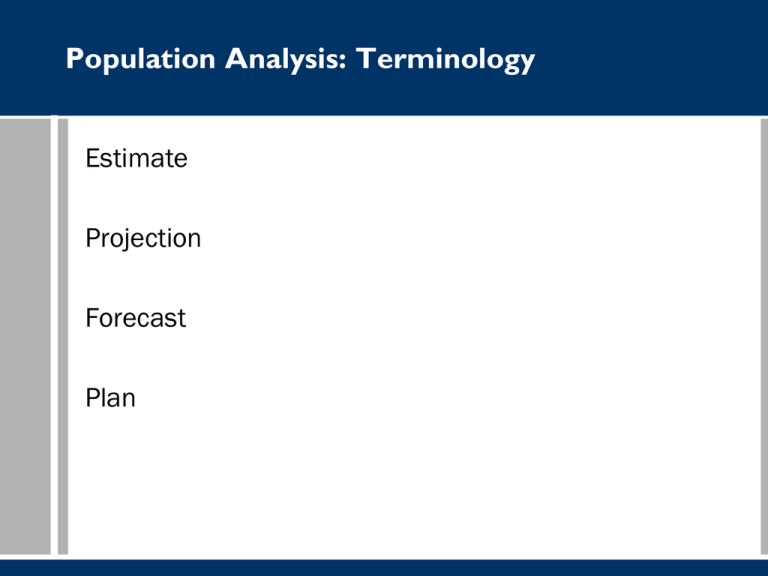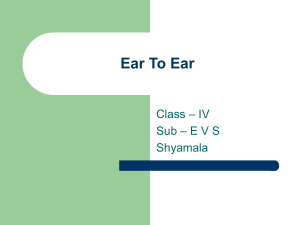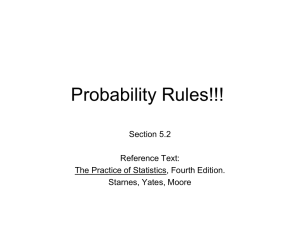
Population Analysis: Terminology
Estimate
Projection
Forecast
Plan
Population Projection Techniques
Trend extrapolation models
Linear
Exponential
Modified Exponential
Ratio share
Holding capacity
Cohort component
Components of Population Change
P=N+M
N=natural increase or decrease (i.e., birth or death)
M = net migration
Trend Extrapolation: Linear Model
y = a + bx
P t+n = Pt + b(n)
P
Pt
P t+n
b
n
= population
= population in base year (current time)
= population n periods of time in the future
= average change per time period
= number of time periods
Trend Extrapolation: Exponential Model
P t+n = Pt(1 + r)n
r = rate of change per time period
Trend Extrapolation:
Modified Exponential Model
P t+n = K – [(K - Pt) vn]
K = maximum capacity
v = average portion of unused capacity remaining after each time period
Ratio-Share
Holding Capacity
Cohort-Component Model
Shortcomings of trend extrapolation techniques:
Aggregated inputs and outputs
No identification of causes of population change
Cohort-Component Model
Perhaps no single factor is more important for local
government planning than the size and composition of
a region's population and the way it will change in the
future. Even though the total population may remain
constant, changes in its composition can
fundamentally alter the need for public facilities and
services.
-Klosterman (1990), p. 51
Cohort-Component Model
Allows for dissagregated view of population change
(projects size AND composition)
Directly considers causes of population change (death,
birth, migration)
Cohort-Component Model
Components of Population Change in the Model:
Death (survival rate)
Birth (fertility rate)
Migration (adjust by migration rate)
Survival Rates
Probability that a member of an age-sex cohort will survive into the next age group
(E.g., Probability that a female in the 10-14 age group will survive to be in the
15-19 age group five years from now.)
n+1P t+1
= nPt * n(S)
A ge-S ex C ohort
F 10-14
F 15-19
P op in 2000 S urvival R ate
10,000
2005
0.998
?
Time t
Time t+1
85 y ears and ov er
85 y ears and ov er
80 to 84 y ears
80 to 84 y ears
75 to 79 y ears
75 to 79 y ears
70 to 74 y ears
70 to 74 y ears
65 to 69 y ears
65 to 69 y ears
60 to 64 y ears
60 to 64 y ears
55 to 59 y ears
55 to 59 y ears
50 to 54 y ears
50 to 54 y ears
45 to 49 y ears
45 to 49 y ears
40 to 44 y ears
40 to 44 y ears
35 to 39 y ears
35 to 39 y ears
30 to 34 y ears
30 to 34 y ears
25 to 29 y ears
25 to 29 y ears
20 to 25 y ears
20 to 25 y ears
15 to 19 y ears
15 to 19 y ears
10 to 14 y ears
10 to 14 y ears
5 to 9 y ears
5 to 9 y ears
0 to 4 y ears
0 to 4 y ears
-
10,000
20,000
30,000
40,000
50,000
0
10,000
20,000
30,000
40,000
50,000
Memphis MSA:
Population by Age and Sex, 2000
85 years and
80 to 84 years
75 to 79 years
70 to 74 years
65 to 69 years
60 to 64 years
55 to 59 years
50 to 54 years
45 to 49 years
40 to 44 years
35 to 39 years
30 to 34 years
25 to 29 years
20 to 25 years
15 to 19 years
10 to 14 years
5 to 9 years
0 to 4 years
-5%
Male
Female
-4%
-3%
-2%
-1%
0%
1%
2%
3%
4%
5%
Export-Base Theory of Growth
Basic industries:
produce goods and services for export
bring in “new” money
depend on external factors (exogenous demand)
Non-basic industries:
produce for local consumption (sell products within the local
market)
don’t bring in new money
Depend on local business conditions
Economic Base Multiplier (k)
Ratio of total employment to basic employment
k=
total employment
basic employment
k * ∆ basic employment = ∆ total employment
Location Quotients
LQ = ei / e
Ei / E
ei = local employment in industry i
e = total local employment
Ei = US employment in industry i
E = total US employment
Interpreting Location Quotients
LQ < 1
All employment is non-basic
LQ = 1
All employment is non-basic
(locality is exactly self-sufficient)
LQ > 1
Some employment is basic
Calculating Basic Employment
Basic employment i = ei – e(Ei / E)
Caveats of the LQ Approach
Assumptions:
1. Productivity within a specified industry is uniform
across all regions
2. Consumption of goods from a given industry is
everywhere equal
3. Each industry produces a single homogenous good
Shift-Share Analysis
Partitions local employment growth into 3 components:
National Growth Component
Industrial Mix Component
Competitive Component








